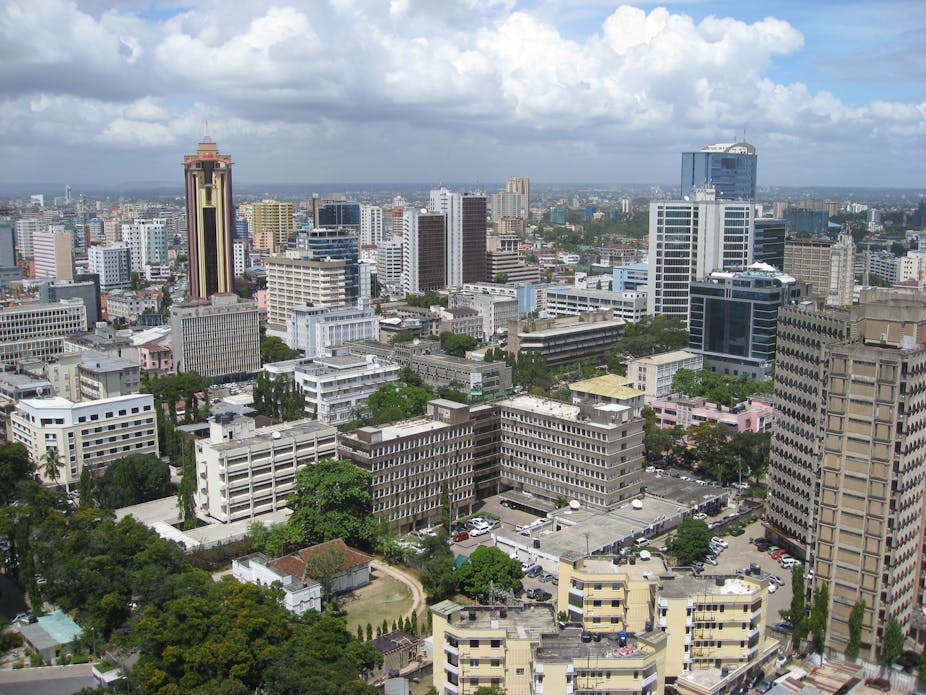Sub-Saharan African countries are urbanising fast. Currently, 335 million people are living in urban areas across the continent and this number is expected to double in the next twenty-five years.
But as African cities have grown so have their problems. They are more congested than they were a decade ago, commuting times have increased and there is growing evidence that air pollution is on the rise.
Most African governments have found it difficult to expand public services and infrastructure fast enough to keep up with their growing populations. This has led to an expansion of informal settlements. According to UN Habitat, more than 60% of all residents in African cities now live in slums.
However, the news is not all bad. Most of Africa’s urbanisation is yet to come so there is still time to get things right. Africa is urbanising later and at a lower level of income than other developing regions (see graph below) which means that African policy makers can learn from the successes and failures of other countries. Done right, urbanisation has the potential to significantly raise both productivity and living standards across Africa.
Figure 1.1 Urbanisation and developing regions

Cities are engines of growth
Urbanisation is central to the growth process. As countries develop, workers move from rural to urban areas in search of higher paying and more productive jobs. Similarly, entrepreneurs choose to locate their firms in cities where localised economies increase their productivity. This is why cities are viewed as engines of growth.
Historical data support this view. Since the industrial revolution, cities have become centres for industrial production and, as cities grow, so have the countries where they are located. The robust relationship between levels of urbanisation and per capita income can be seen in data mapping trends of economic growth against urbanisation. (See graph below).
Figure 1.2 Urbanisation and economic development

Economic growth happens when workers shift out of low-productivity activities such as agriculture and into high-productivity activities, such as manufacturing and some service activities. Urbanisation generates growth in two primary ways: urban jobs tend to be more productive than rural jobs and productivity changes are larger in urban areas than in rural areas.
In poor countries, where the majority of workers are employed in agriculture, economic growth is driven primarily by rural to urban migration. For rich countries, economic growth is primarily driven by higher productivity changes in urban areas compared with rural areas.
Cities are engines of growth for a range of other reasons too. It is cheaper to provide infrastructure when populations are large and people are densely packed together.
Spatial proximity also makes it easier for individuals to learn from each other. There is increasing evidence that knowledge spillovers play a key role in raising the productivity of successful cities. In the United States, for example, a 10% rise in the percentage of workers with a college degree in cities leads to a 22% rise in per capita metropolitan product.
What’s missing in African cities
Historically, the best way for a country to grow is by expanding its manufacturing sector (see graph below). Early industrialisation usually takes place in cities so industrialisation and urbanisation go hand in hand.
The problem is that Africa is urbanising without industrialising. Few African cities are expanding their manufacturing sectors - at least not at the same rate as cities in other regions. This is a cause for concern because manufacturing jobs usually pay higher wages than those in agriculture and trade.
Figure 1.3: Manufacturing and Economic Development

Across Africa, average wages are highest among miners and manufacturing workers. But the mining sector is capital-intensive which means that it employs fewer workers compared to other sectors. Therefore the best way to raise incomes is by increasing the number of manufacturing jobs.
Where Africa’s cities are falling short
Successful cities serve two functions: they provide liveable environments for workers and their families; and they provide productive environments for businesses.
The typical African city is achieving neither. Most African cities score low on every metric of livability such as housing quality, access to public services, and security of tenure.
African cities also fall short in terms of productivity. Often firms are unable to take full advantage of being based in cities because of inappropriate regulations and massive under-investment in public infrastructure.
On top of that, high urban costs make it difficult for African firms to compete on global markets.
These constraints can be eased through better policies, particularly in relation to land access and business regulations.
The Way Forward
Getting the most out of Africa’s rapid urbanisation won’t be easy. There needs to be a focus on proper co-ordination and effective planning.
The biggest challenge is to understand how public policies can be used to optimise investments by households and firms. The development of a city is about three investment processes which build assets on land: investment in residential property, in commercial property and in infrastructure.
The productivity of these three forms of investment is mutually inter-dependent. These interdependencies give rise to benefits that accrue to parties other than those making the investment (positive externality), which, to be optimised, require coordination through effective planning.
Developing countries need to learn how to manage their urbanisation process. The key to success is not simply ensuring that the positive benefits outweigh the negative — it is about creating liveable and productive environments that promote sustained growth.

